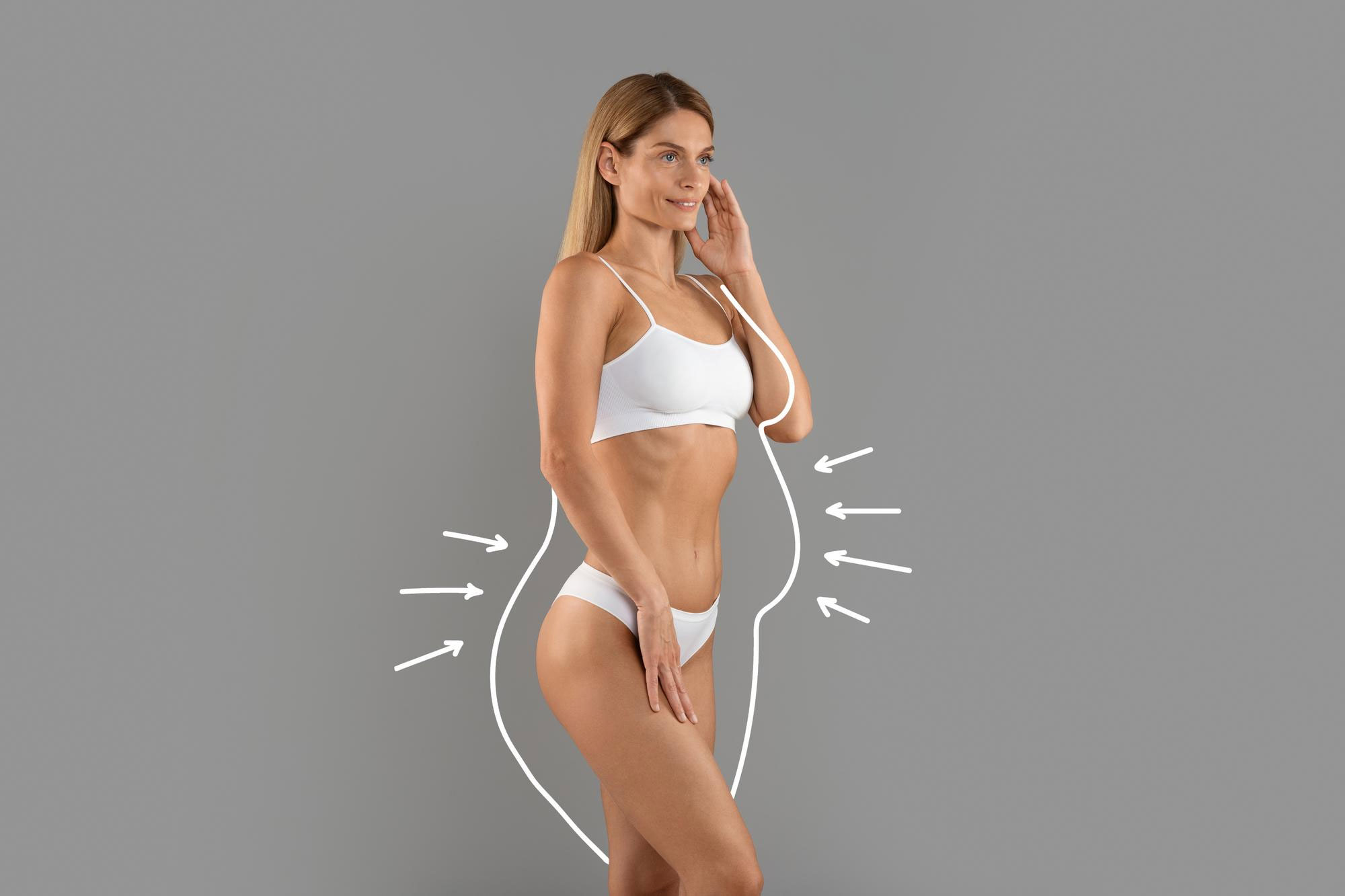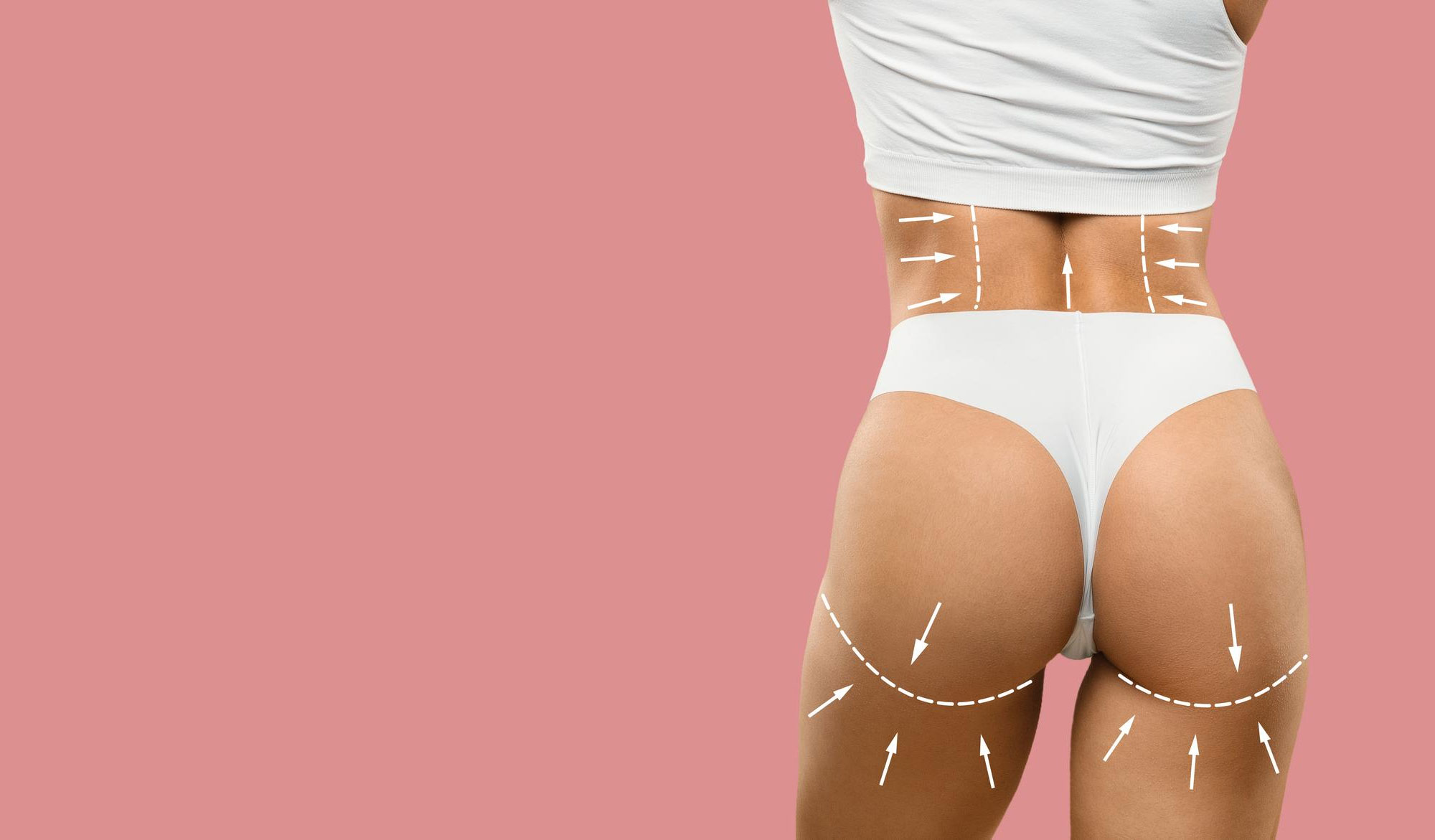What is a breast lift and for what purpose?
Breast lift is a surgical procedure performed to correct sagging in the breast area and to achieve a younger, fresh posture. The main goal here is to remove excess skin that has loosened and lost its elasticity, lift the breast tissue upwards and, if necessary, reduce the diameter of the areola (the dark ring around the nipple) to give a more aesthetic appearance.
In some people, a significant decrease in breast volume may be observed along with sagging. In such a case, breast implants may be preferred in combination with a breast lift. If the size of the breasts is so large that the person is uncomfortable, it is also possible to combine it with breast reduction surgery. In summary, the main purpose of breast lift surgery is to improve the shape, form and position of the breasts.
What are the Causes of Breast Sagging?
Many people may ask, "Why are my breasts not as perky as they used to be?" Here are a few possible answers to this question:
Aging: With age, the amount of collagen and elastin in the skin decreases. These losses reduce the elasticity of the skin, making it difficult for the breasts to withstand their own weight.
Pregnancy and Breastfeeding: During this period, breast tissue grows and then shrinks again. Just like when you fill a balloon with air and then release it, the skin and supporting tissue of the breast can stretch and tend to sag.
Weight Fluctuations: Frequent weight gain and loss causes fluctuations in breast volume and skin elasticity. These fluctuations can lead to loosening of the ligaments and skin to which the breast is attached.
Genetic Factors: Some people can keep their breasts firm for a long time thanks to their stronger collagen structure, while others may tend to sag at an earlier age.
Gravity It may sound cliché, but gravity does indeed contribute to sagging breasts. The tissue, which has been constantly pulled downwards over the years, may at some point begin to lose its firmness.
Who is a Suitable Candidate for Breast Lift?
Many people ask the question "Is breast lift surgery suitable for me?". In fact, the key point here is to be physically and psychologically ready for surgery as well as aesthetic concerns.
Health Status: It is important that general health is good, that is, problems such as diabetes and heart disease are under control. Because in surgical interventions, factors affecting the body's healing capacity directly affect the results of surgery.
Smoking Smoking delays tissue healing as it negatively affects blood circulation. If smoking is stopped before and after surgery, the risk of complications is greatly reduced.
Lower Positioning of the Nipple: In most breast lift candidates, the nipple has descended below the lower breast line, sometimes even pointing towards the floor. This type of sagging can be corrected with surgery.
Pregnancy Plan: Becoming pregnant after surgery may cause the breast shape to change again. Therefore, it may be advisable to postpone the surgery if pregnancy is planned in the future.
Expectation and Psychological Preparation: Expectations about the outcome need to be realistic. A breast lift does not always keep the breasts as they were in their 20s. Although it offers an effective solution against time, some loosening may occur again with natural processes (aging, weight gain and loss, etc.).
What are the Methods Used in Breast Lift Surgery?
The surgical technique is chosen according to the degree of sagging of the breast, the quality of the skin and the appearance that the person aims for. Each technique has its own advantages and disadvantages.
Crescent Lift (Half Moon Incision): Mild sagging can be corrected by making a half-moon-shaped incision in the upper half of the nipple. Here, excess skin is removed and the nipple is positioned slightly higher. However, it is not enough for those with severe sagging.
Donut Lift (Periareolar Incision): An incision is made in a circle around the areola. Excess skin is removed in a "ring" around the areola. Areola narrowing can also be performed at this stage. It is a method suitable for moderate sagging.
Lollipop Lift (Vertical Incision Mastopexy): In addition to the round incision around the nipple, a vertical incision is added under the breast. This way, more skin can be removed and the shape of the breast can be corrected more effectively. It is preferred for moderate to advanced sagging, but not too advanced.
Anchor Lift (Inverted T or Wise Pattern): The classic and most comprehensive technique. In addition to the incision around the areola, vertical and horizontal incisions are added to create an inverted T-like scar. In advanced sagging, it is ideal to remove maximum excess skin and reshape the breast tissue.
Internal Bra Technique: In some cases, especially in patients where the skin is not very elastic and there is a high risk of the breast sagging again in the future, additional support materials (e.g. absorbable meshes) can be used. This creates a structure that almost "suspends" the breast from below.
Here, the question "Which method is the best?" is often asked. In fact, there is no single 'best' method. Your breast shape, skin quality, how much sagging there is and your future expectations will determine the most appropriate technique. Just as different remodeling methods are applied to houses of different sizes and features, the best approach for each breast shape is different.
How is Breast Lift Surgery Performed?
Breast lift is usually performed in a hospital environment, under sterile conditions and under anesthesia. The stages can be roughly summarized as follows:
Anesthesia Selection: Mostly general anesthesia is preferred. This is the most ideal method in terms of patient comfort and surgeon's ability to work comfortably.
Making the Incisions: Whichever of the techniques mentioned above is preferred, incisions are made according to that plan. For example, if it is a donut lift, incisions are made around the areola, if it is an anchor lift, incisions are made around the areola + vertical + horizontal incisions.
Shaping the Breast Tissue and Skin: Excess skin is removed and the breast tissue is lifted upwards. At this stage, the nipple is also moved to a higher position. If the areola is too wide, the skin around it is removed and narrowed.
Closure of Incision Sites: At the end of the operation, the incisions are usually closed with hidden sutures (internal sutures) and skin stitches. If necessary, thin tapes or special adhesives are also used.
Dressing and Support: At the end of the operation, special dressings and a supportive bra are worn to minimize unwanted conditions such as swelling and hematoma (blood accumulation).
How Does the Postoperative Recovery Progress?
It is quite normal to experience various degrees of pain, tenderness, swelling and bruising during the first few days or weeks after the operation. You can think of them as your body's first reactions to the surgery. During this period, there is usually a feeling of discomfort that can be controlled with mild painkillers.
First Week For the first 24-48 hours after surgery, there may be a feeling of pressure or pain in the chest area. Most patients can gradually return to their daily routine (such as light housework) within a few days. However, activities such as heavy lifting and vigorous exercise are not yet permitted.
First month: This is an important time for the stitches to heal and the tissue to recover. At this stage, a sports bra or a special supportive bra is used and it may be necessary to wear this bra continuously (usually for 4-6 weeks).
After the First Month: A gradual return to a more active life is planned. Some patients can return to desk work within 2-3 weeks. For strenuous sports or activities that require intensive use of the chest muscles, a waiting period of 6-8 weeks is usually recommended.
Long Term Recovery: In the first months, the breasts may feel higher or firmer than expected. Over time, the edema decreases, the tissues soften and the breast settles into a natural position. While the scars may be pink-red at first, they fade as time passes. The color of the scars may change depending on the genetic structure. Patients who wish can use creams or silicone gels to reduce the appearance of scars in line with the surgeon's recommendation.
What Should Be Considered After Surgery?
Use of a Supportive Bra: This can be thought of as a "corset" that prevents sagging and reduces stretching of the suture lines. Just as we use a brace against sprains, it is necessary to use a bra that supports the breasts after breast lift.
Lying Position: In the first few weeks, it is important not to apply pressure by lying face down or on your side. Usually sleeping on your back with a slightly elevated pillow provides comfort.
No Heavy Lifting: For a while, movements such as lifting children, carrying heavy bags, reaching to the upper shelves are restricted. This is necessary to avoid straining the suture line and for the tissue healing inside to proceed in a healthy way.
Movement and Exercise: In the first days after surgery, it is useful to increase blood circulation by taking short walks. However, intense fast-paced sports or exercises that strain the chest muscle should be avoided.
Check-ups and Doctor's Recommendations: Regular check-ups are important to see if the healing process is on track. Following the doctor's advice to the letter significantly reduces the risk of complications.
How Permanent Are The Results After Breast Lift?
Many people wonder, "Will the effect of this operation last a lifetime?" A breast lift does not stop time completely, but it allows the breasts to maintain their perkier posture for a long time. Nevertheless, a slight loosening may occur due to factors such as aging, genetic factors, weight changes and gravity. It is possible to liken this situation to the effort to maintain the new look of a house after renovation. You renovate your house very well, but over the years, minor repairs may still be required.
Of course, the postoperative appearance is a more permanent and significant improvement compared to the preoperative situation. Habits such as regular exercise, healthy eating, weight control and the use of supportive bras will help you benefit from the results of the surgery in the long term.
What are the Possible Risks and Complications of the Surgery?
As with any surgery, a breast lift involves certain risks. Although these risks are not very common, it is important to be aware of them and be prepared for the process:
Bleeding and Hematoma: Although very rare, blood accumulation may occur in the postoperative area. In such cases, re-intervention may be required.
Infection There is always a low risk of infection in surgical procedures. Wound care and the use of antibiotics help to minimize this risk.
Scarring and Healing Problems: Scars fade over time but do not disappear completely. In addition, some patients may experience delayed wound healing or formation of a bad scar (hypertrophic scar, keloid).
Changes in Sensitivity: There may be temporary or permanent changes in sensation (numbness, hypersensitivity, etc.) in the nipple or breast skin. This condition is usually temporary, but it may also be permanent.
Asymmetry or failure to shape the breast as desired: Minimal asymmetry or incomplete fulfillment of expectations may occur depending on tissue characteristics or the healing process.
Vascular Problems: Very old people or those with serious medical illnesses may experience problems with tissue blood supply. This negatively affects wound healing.
Can Breast Lift and Breast Augmentation Be Performed Together?
If the breasts appear to be insufficient in volume, breast augmentation (implant placement) can be performed in the same session as the breast lift. This is like repairing the roof of a building and adding an extra floor: It is possible to remove sagging and increase volume at the same time. However, this dual procedure makes the surgical process and planning a little more complicated. Which implant size, through which incision it will be placed and how tissue support will be provided must be meticulously evaluated by the surgeon.
What should be done during the pre-operative preparation process?
Examination and Planning: Before the surgery, breast tissue, skin elasticity, degree of sagging and general health status are evaluated in detail. Measurements are taken, photographs are taken and an operation plan is created.
Mammography or Ultrasound if necessary: Preoperative imaging tests may be requested, especially in patients over the age of 40 or if there is a family history of breast cancer.
Smoking and Nutrition: If smoking is present, it is recommended to quit at least a few weeks before surgery. Paying attention to the diet and consuming plenty of water before surgery increases the body's healing capacity.
Medication Regulations: If blood thinners or herbal supplements are used, the physician should be informed before surgery. Some medications or supplements may be temporarily discontinued.
Psychological Preparation: Having realistic expectations and being informed about the surgical process and recovery period in advance makes the person feel more comfortable psychologically.
Last Word
Breast lift surgery offers highly successful solutions to the problem of sagging breasts both functionally and aesthetically. Many people who undergo this operation experience an increase in self-confidence and quality of life thanks to their breasts, which are lifted and gain a more aesthetic appearance. Of course, like any surgical intervention, breast lift also has its own risks and points to be considered. However, these risks can be minimized with good preparation, choosing the right surgeon, evaluating personal health status and careful care in the postoperative period.
It should not be forgotten that any aesthetic intervention cannot completely stop the flow of time. The breasts are not the only part of the body that is renewed and transformed in the natural course of life, and every tissue undergoes its own changes as it ages. Although breast lift is a very effective method in retrospectively correcting these changes, the permanence of the results obtained should be supported with a healthy lifestyle and regular controls.



















